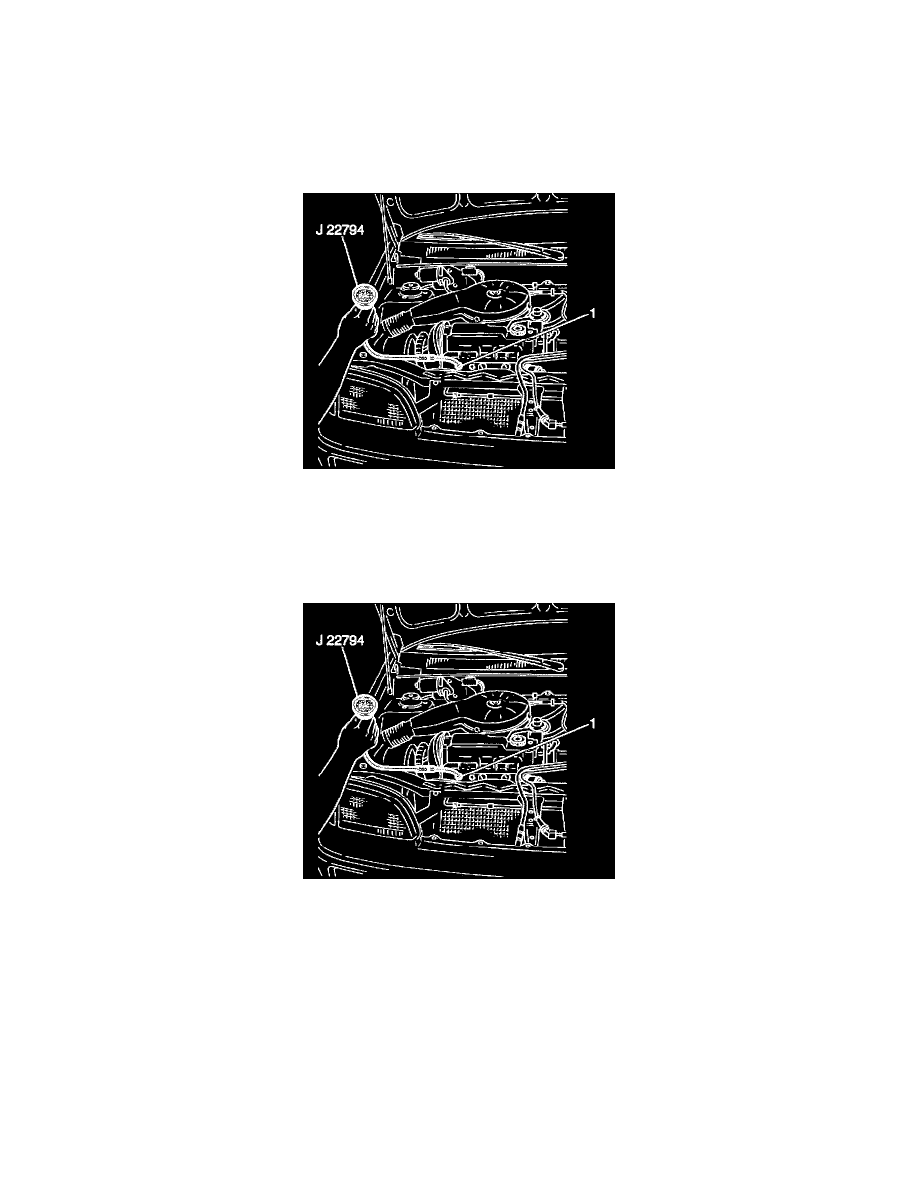Metro L3-061 1.0L VIN 6 TBI (1998)

Compression Check: Testing and Inspection
To diagnose valve or piston faults and poor engine operation, a compression test must be performed to determine the cylinder compression pressure.
When checking the cylinder compression, the following conditions must be met.
^
The throttle must be wide-open.
^
All of the spark plugs must be removed.
^
The battery must be at or near full charge.
Test each cylinder four times.
1. Turn the ignition switch to LOCK.
IMPORTANT: Be certain to clean any debris from around the spark plug holes prior to removing the spark plugs.
2. Remove all of the spark plugs and disconnect the distributor electrical connector.
3. Remove the FL fuse (1) from the fuse and relay box.
4. Install a J22794 and a compression gage into a spark plug hole (1).
5. Disengage the clutch (manual transaxle equipped vehicles) to lighten the starting load on the engine. Depress the accelerator pedal to the floor
(wide-open throttle).
6. Crank the engine (with a fully charged battery) to take four pressure readings.
7. Measure the highest pressure reading on the compression gage.
^
Standard compression pressure is 1,400 kPa (199 psi) at 250 RPM.
^
Minimum allowable compression pressure is 1,100 kPa (156.4 psi) at 250 RPM.
IMPORTANT: The maximum allowable compression pressure difference between any two cylinders is 100 kPa (14.2 psi) at 250 RPM.
8. Repeat the compression test procedures for the remaining two cylinders.
9. Remove the J 22794 and compression gage from the engine.
10. Install all three spark plugs and connect the distributor electrical connector.
